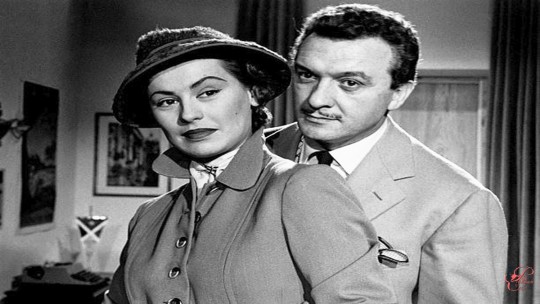#sally forrest
Explore tagged Tumblr posts
Text

Sally Forrest
#vintage#hollywood#actress#dancer#sally forrest#retro#diva#50's#classic hollywood#old hollywod glamour
259 notes
·
View notes
Text

Sally Forrest
#sally forrest#beautiful#sexy#pin up#old hollywood#cheesecake#classic hollywood#pinupgirl#classic beauty#vintage#beauty
49 notes
·
View notes
Text

Sally Forrest-Dale Robertson "El hijo de Simbad" (Son of Sinbad) 1955, de Ted Tetzlaff.
9 notes
·
View notes
Text

The Strange Door (1951) - Australian Poster
#the strange door#charles laughton#boris karloff#sally forrest#1951#1950s movies#joseph pevney#classic horror#universal horror#movie posters
23 notes
·
View notes
Text

Dancer Sally Forrest in "Son Of Sinbad" in which she performed the first pole dance in American cinema in 3D and color! Sally explained that as filming progress her costumes got smaller and smaller until they reached the absolute limit the censor would allow
17 notes
·
View notes
Text






Never Fear (1950) Ida Lupino
January 12th 2025
#never fear#1950#ida lupino#sally forrest#keefe brasselle#hugh o'brian#lawrence dobkin#eve miller#rita lupino
2 notes
·
View notes
Text

Remembering Sally Forrest on her birthday
With Keefe Brasselle in The Young Lovers
5 notes
·
View notes
Text










1956 the “lipstick killer” is loose in New York and three newspaper editors are set loose to catch him
#dana andrews#ida lupino#george sanders#howard duff#John drew Barrymore#thomas mitchell#rhonda fleming#sally forrest#vincent price
2 notes
·
View notes
Text

“MGM’s fastest drama on two wheels.”
Ralph Meeker and Sally Forrest in Fred M. Wilcox’s CODE TWO released #OnThisDay in 1953, 70 years ago today.
13 notes
·
View notes
Text
Mystery Street

Before he moved on to large-scale adventure films like THE MAGNIFICENT SEVEN (1960) and THE GREAT ESCAPE (1963), John Sturges directed a string of tidy films noirs for various studios, including MGM. His MYSTERY STREET (1950, TCM), with a script by Sydney Boehm and Richard Brooks from a Leonard Spigelgass story inspired by a real-life case, was one of the first films shot on location in Boston and one of the first to focus on the forensic side of police detective work.
B-girl (that’s Production Code-speak for “hooker”) Jan Sterling enlists a drunken Marshall Thompson’s car to help track down a suitor who’s been dodging her. After stealing Marshall’s car, she gets shot for her trouble, and six months later, her bones are discovered on the beach near Cape Cod. Police detective Ricardo Montalban enlists Harvard forensic scientist Bruce Bennett to study the skeleton and comes up with enough evidence to arrest Thompson. But we know he didn’t do it. The case is all about the evidence, as Bennett uses science (remember that?) to determine how Sterling died while Montalban uses old-fashioned police work and his own instincts to track down the real killer.
Montalban’s casting is particularly interesting, as he’s the rare Latinx character for the period who isn’t stereotyped. He’s very good at his job and accepted as an equal by his colleagues. Race isn’t totally invisible. One suspect tries to pull rank on him, claiming to be descended from one of the state’s founding families, which gives him the right to some respect. Montalban throws the line right back at him, demanding respect in his own right, “and my family hasn’t been in the country for even 100 years.”

With John Alton running the camera even the Cape Cod scenes seem threatening, and his generous use of shadows helps keep up the suspense. In addition, Sturges has a top-notch cast, including Elsa Lanchester, stealing scenes as Sterling’s scheming landlady, and Betsy Blair, particularly fine as a neighbor who ends up helping with the case. Even Sally Forrest, who rarely did good work when not directed by Ida Lupino, has one beautiful moment as Thompson’s wife. While her husband’s in jail awaiting trial, Montalban asks her to read off their canceled checks from the month of the murder, which becomes a lesson in personalization. But top honors go to Sterling, who has about five minutes to develop a character who will haunt the film. She pulls it off by playing the role as if it were the lead. She’s so fully invested in the character you feel her loss keenly and can understand how the case could obsess even the detective who’s never met her.

#film noir#john sturges#richard brooks#ricardo montalban#bruce bennett#marshall thompson#jan sterling#sally forrest#betsy blair#elsa lanchester#john alton
0 notes
Text
15 marzo … ricordiamo …
15 marzo … ricordiamo … #semprevivineiricordi #nomidaricordare #personaggiimportanti #perfettamentechic
2023: Marisa Traversi, all’anagrafe Marialuisa Traversi, attrice italiana. Milanese di nascita, si trasferì con la famiglia a Roma subito dopo la seconda guerra mondiale. Dapprima cantante nei night romani e reginetta di vari concorsi di bellezza, ottenne una parte nel 1957 nel film Parola di ladro (1957) e fu l’inizio di una carriera cinematografica e televisiva. Nell’estate del 1972 ebbe un…

View On WordPress
#15 marzo#Ann Sothern#Betty Jeanne Grayson#Gail Davis#Hariette Arlene Lake#Katherine Feeney#Lenita Lane#Lenita Mary Lane#Marialuisa Traversi#Marisa Traversi#Otello Toso#Ricordiamo#Sally Forrest#Suzanne Pierrette Delaire#Suzy Delair#Yaphet Frederick Kotto#Yaphet Kotto
0 notes
Text

Sally Forrest-Red Skelton "Excuse me dust" 1951, de Roy Rowland.
8 notes
·
View notes
Photo


While the City Sleeps(1956)
#film#while the city sleeps#1956#dana andrews#ida lupino#sally forrest#fritz lang#charles einstein#50s#old hollywood#film noir#vintage#...
0 notes


